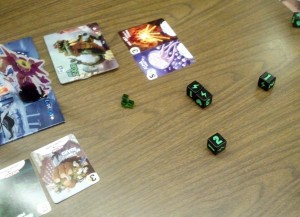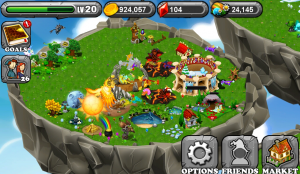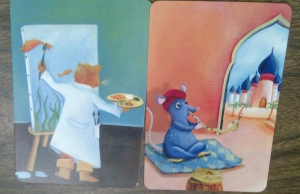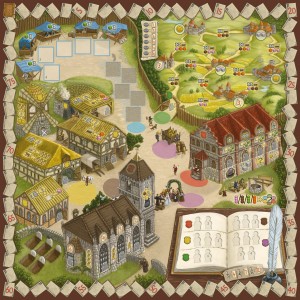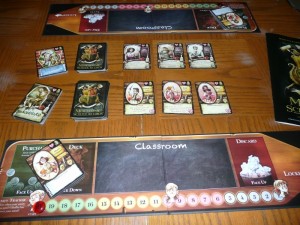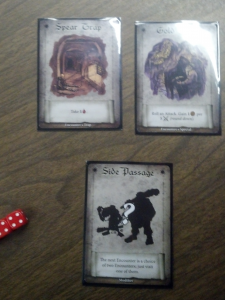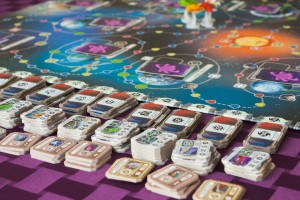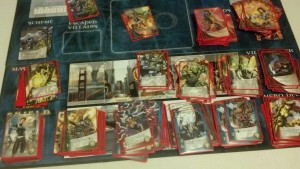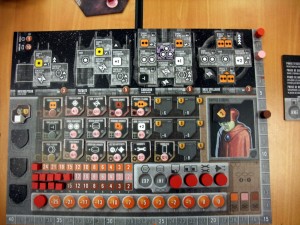
It appears that Eclipse is a 4X board game that can be played in a reasonable amount of time? Who would have thought. It says 30 minutes per player on the tin, and assuming everyone knows how to play that seems easily achievable (if not better).
The technology “tree” is fairly nice, feels weighty and meaningful, but is still pretty simple. Of course I’m going to talk about the Techtree first, did you think I’d been replaced? Anyway, the “available tech” is limited. There are ~4 copies of each tech in the bag, and you pull out a few each turn (6 per turn + initial seed in a three player game). In a 5-6 player game some folks just aren’t going to get tech, but even in the three player game we played some of the tech didn’t come out in time. Every tech has 2 prices, Normal and Minimum. So something simple might cost 2/2 something more difficult might be 8/4. There are three general types of tech, and as you buy more of one, you get a discount on future ones, down to the minimum price.
There are three resources in the game, Money, Material and Science. Science gets you tech. Material builds you stuff, and you have to pay money each turn to keep your empire running. You can take as many actions as you want each turn, but each one uses one of your influence discs (two if you’re colonizing a new zone). The more discs you use, the higher your upkeep (in money) each turn. There are three kinds of planet in the game (four if you count wild) and each time you settle one your production of the appropriate type of resource increases. The board is hex based, and modular. Exploration can lead to possible fights with ancient races, and various bonuses.

Diplomacy basically lets you send a population cube to an opponent you are adjacent to (and they send one to you) make both of your races more productive, and giving a victory point. Winning wars lets you pull a number of victory tokens from the bag, but you only get to keep one of them. And even then you only have 4-5 spots which double as spots for diplomats. You can of course return the lowest victory token to the bag when you get a better one, but ending diplomacy isn’t so simple. And if you end it with a sneak attack you take the traitor token (worth -2 victory points) from whomever may have it.
The game looks way more complex then it is… there are lots of parts and initial setup takes extra long if you don’t know exactly what you are doing, but with a bit of proper pre-sorting it should be manageable. I’m going to use a bead box like the one pictured to the left (it was like $3-5 at Michaels) to hold everything, which should make setup a lot simpler.
I can’t wait to play this again!
